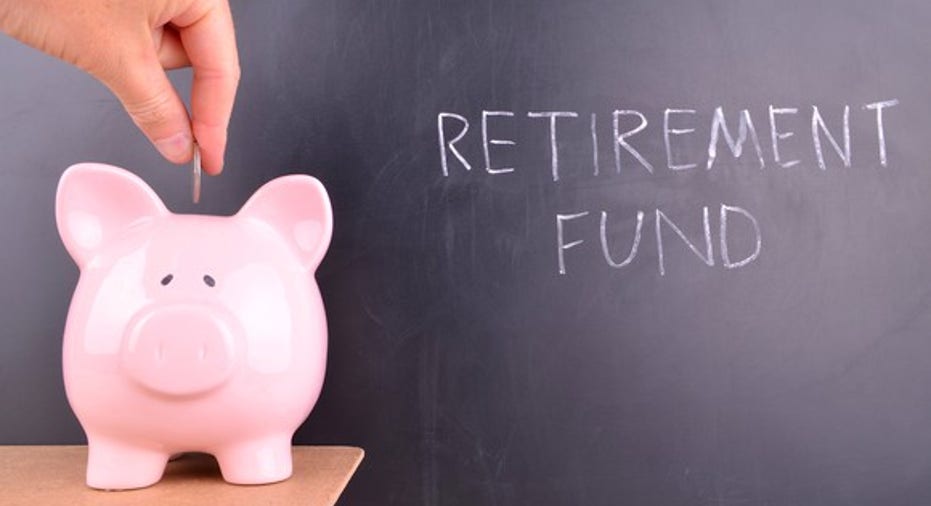When Am I Required to Take Roth IRA Distributions?

The money you have in your tax-advantaged retirement plan usually can't just sit there forever. Rather, you're required to start taking minimum distributions once you turn 70 1/2. This rule applies if you have a traditional IRA, SEP IRA, or SIMPLE IRA. But if you have a Roth account, here's some good news: Roth IRAs don't come with required minimum distributions (RMDs), so you don't have to withdraw a preset amount annually. Rather, you can let your savings sit and earn money indefinitely.
How required minimum distributions work
Any time you have a non-Roth retirement account, you're required to start withdrawing funds upon turning 70 1/2. Your first RMD must be taken by April 1 of the year after the year you reach 70 1/2, and all subsequent RMDs must be taken by Dec. 31 each year.
Image source: Getty Images.
The exact amount of your RMD will depend on your account balance at the end of the previous year and your life expectancy at the time. You can use this helpful calculator to figure out your RMD:
* Calculator is for estimation purposes only, and is not financial planning or advice. As with any tool, it is only as accurate as the assumptions it makes and the data it has, and should not be relied on as a substitute for a financial advisor or a tax professional.
Getting that calculation right is crucial, because if you fail to take an RMD in full by its associated deadline, you'll face a penalty equal to 50% of the amount you neglect to withdraw. If, for, example, your RMD for the year is $8,000 and you only remove $4,000 by the deadline, you'll forfeit $2,000, or 50% of the remaining $4,000 you failed to take as a distribution.
The problem with RMDs
Some people don't mind RMDs because they need the money anyway to pay their living expenses. But if you're working in retirement or have another source of income and don't actually need that money, RMDs can open the door to higher taxes. Remember, all non-Roth retirement account distributions are taxed as ordinary income. If you're forced to take an RMD, not only will you lose out on tax-advantaged growth for the money you withdraw, but you'll be subject to taxes on that sum as well.
Roth accounts don't impose RMDs
The benefit of Roth IRAs, aside from tax-free distributions and growth on your savings, is that they don't come with RMDs. This means you can leave your money in your account to sit and grow as long as you wish. Not only that, but if your Roth IRA remains untouched during your lifetime and you leave it to your spouse upon your passing, your spouse won't be subject to RMDs either.
In fact, the only time RMDs come into play with Roth IRAs is if you leave your account to someone other than a spouse. If, say, your child inherits your Roth account, he or she will be required to take minimum distributions.
Non-spouse beneficiaries who inherit Roth accounts have several options for dealing with RMDs. The first is to withdraw the entire account balance by Dec. 31 of the fifth year after the original account holder's death. The second option is to take distributions over the beneficiary's life expectancy, beginning no later than Dec. 31 of the year following the year of the original account holder's death. In either situation, as long as the Roth account in question was open for five years before withdrawals take place, those distributions will be tax-free.
Thanks to required minimum distributions, those who don't have Roth retirement accounts have less flexibility for withdrawing funds in retirements. Because RMDs can be a hassle and open the door to taxes and penalties, it pays to consider housing your retirement savings in a Roth account. This way, you'll have more options for growing your money during retirement and leaving a strong financial legacy behind for your heirs.
The $16,122 Social Security bonus most retirees completely overlook If you're like most Americans, you're a few years (or more) behind on your retirement savings. But a handful of little-known "Social Security secrets" could help ensure a boost in your retirement income. For example: one easy trick could pay you as much as $16,122 more... each year! Once you learn how to maximize your Social Security benefits, we think you could retire confidently with the peace of mind we're all after.Simply click here to discover how to learn more about these strategies.
The Motley Fool has a disclosure policy.